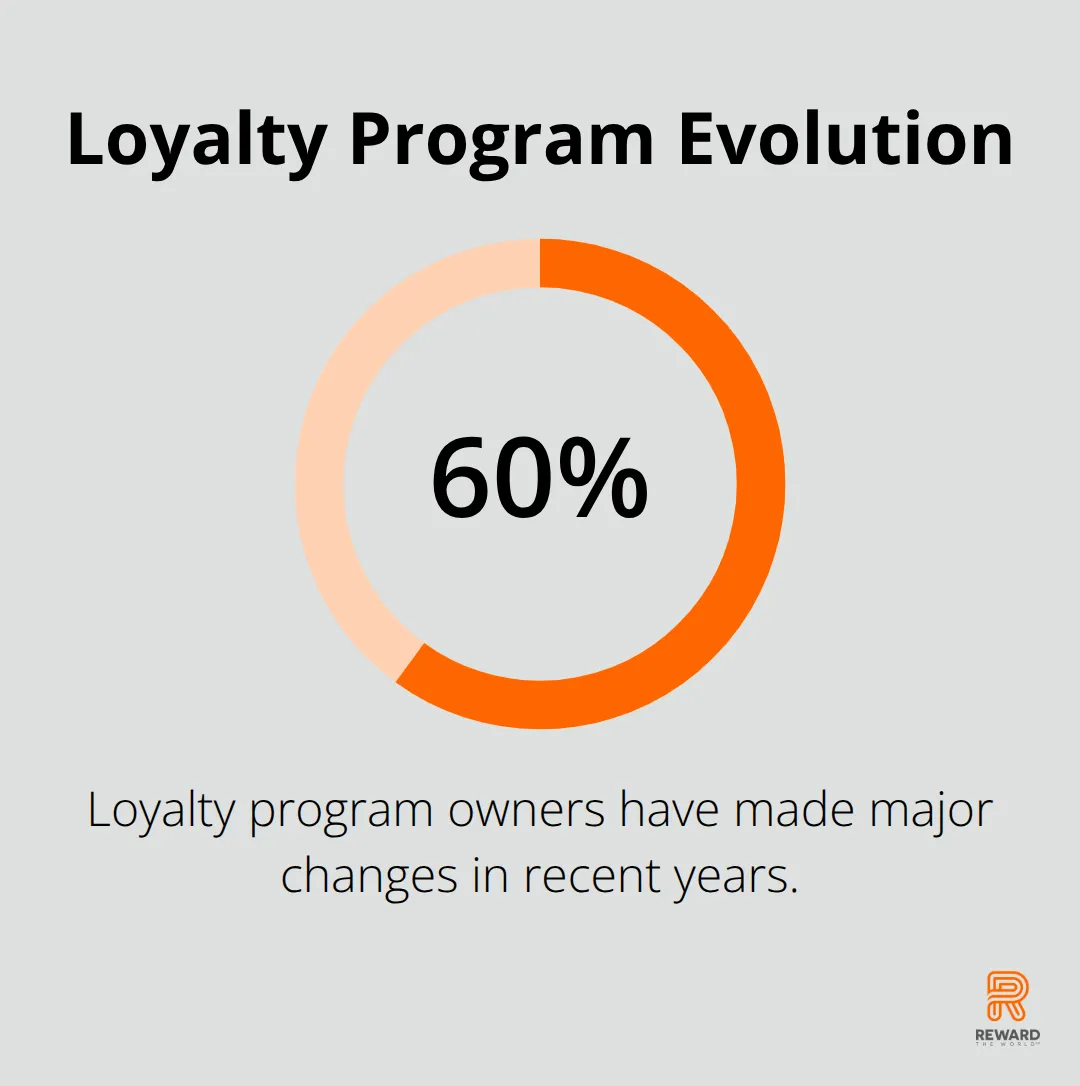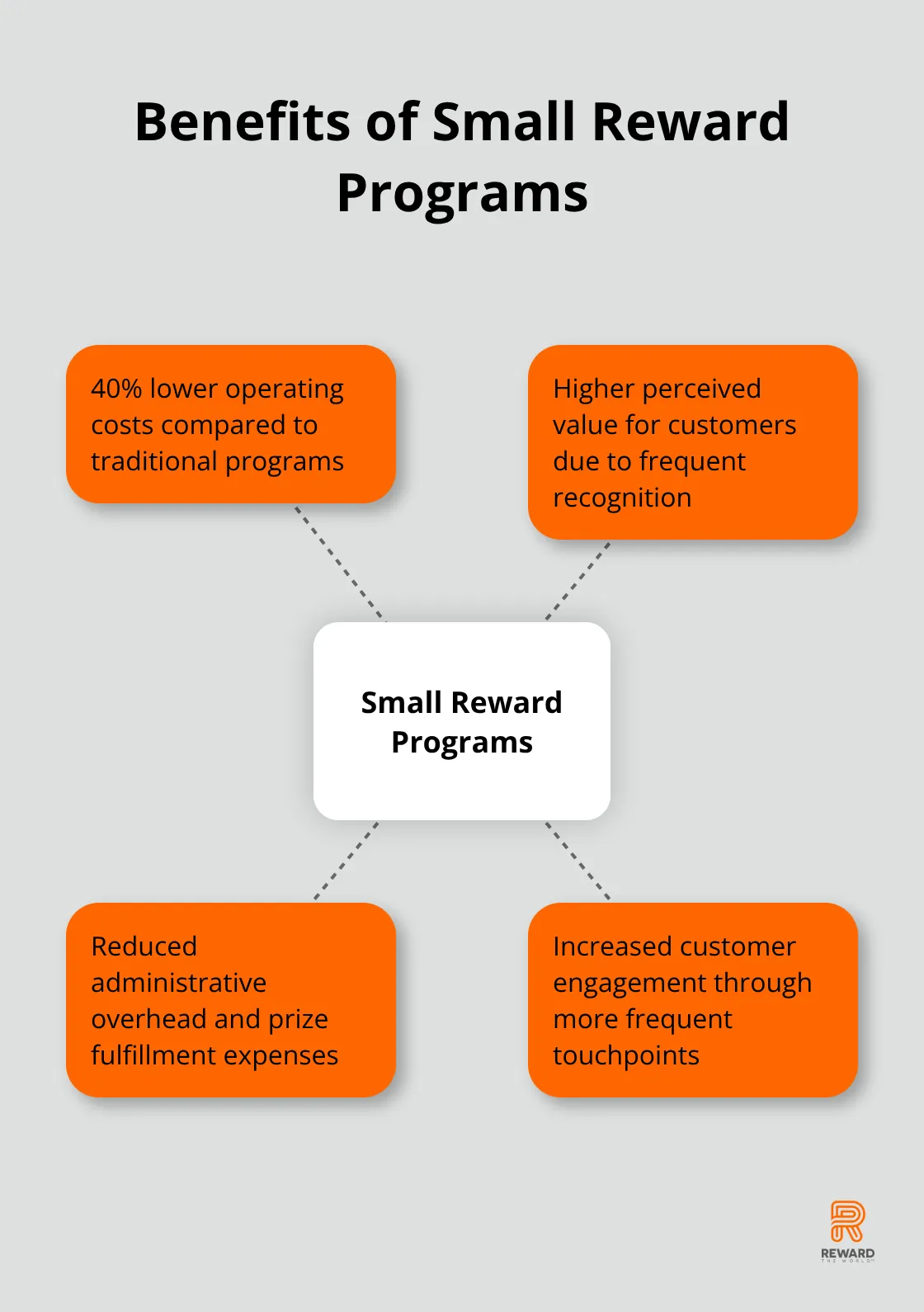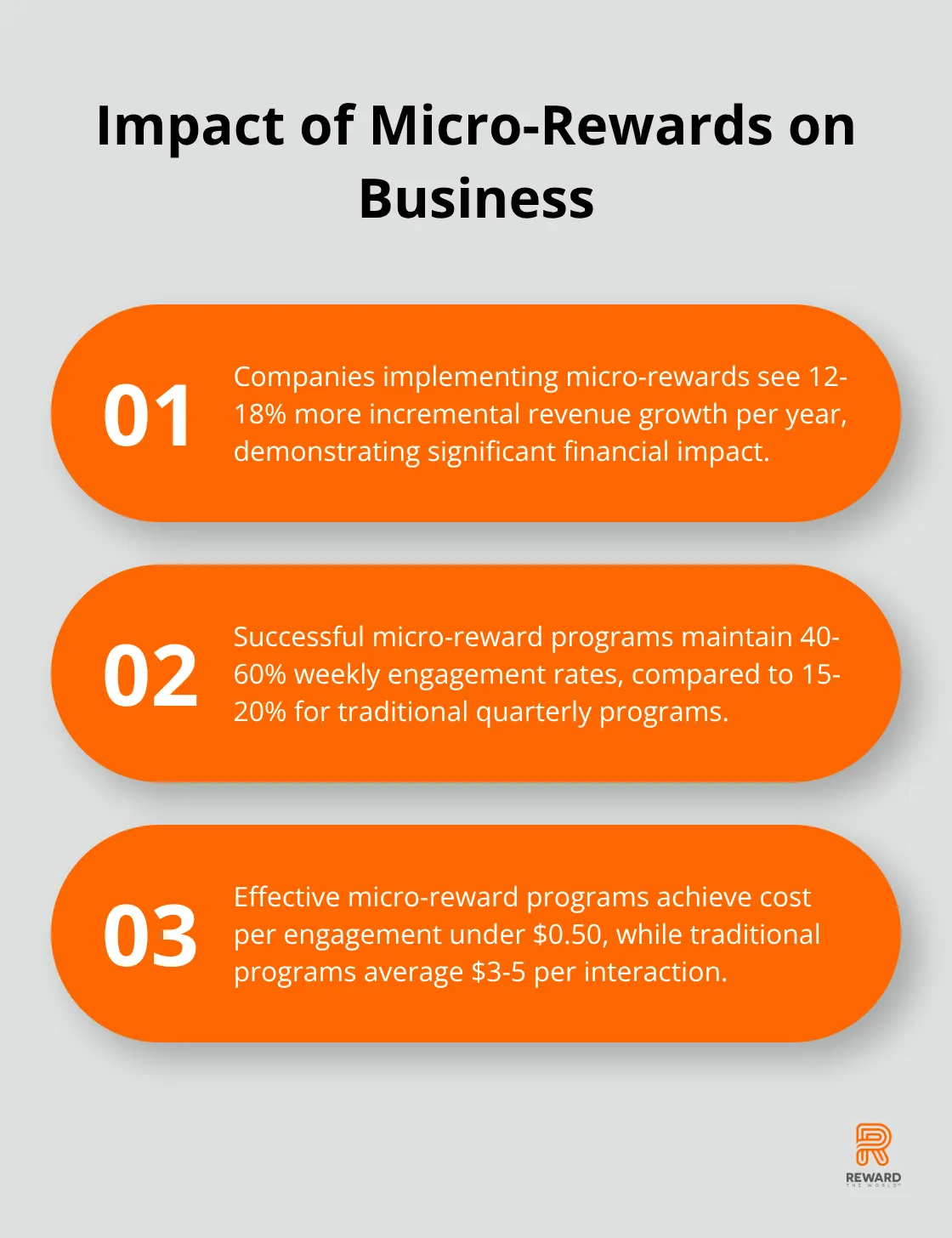
Customer loyalty programs often fail because they rely on big, infrequent rewards that create excitement spikes followed by long periods of disengagement.
We at Reward the World have seen how recurring incentives transform customer relationships. Small, frequent rewards tap into fundamental psychological drivers that keep customers engaged between major milestones.
The science is clear: micro-rewards build stronger habits and emotional connections than traditional point-based systems.
The Psychology Behind Small, Frequent Rewards
Why Your Brain Craves Small Rewards
Your brain responds differently to small, frequent rewards than large, delayed ones. Research shows that dopamine ramps up before reward in certain conditions even after learning, challenging conventional models of reward prediction. This neurochemical response creates immediate satisfaction and reinforces the behavior that triggered the reward. When customers receive points for email opens or profile completion, their brains release dopamine within seconds. This creates a positive association with your brand that lasts far longer than the reward itself.
The Addiction Power of Unpredictability
Variable reward schedules prove more powerful than fixed patterns for habit formation. Casinos understand this principle perfectly – slot machines pay out randomly, not on schedule. Apply this same psychology to your loyalty program by varying reward amounts and timing. Give 50 points for one purchase, 150 for another, then surprise customers with bonus rewards on random days. Research shows that loyalty programs rest on psychological mechanisms that drive customer engagement. This unpredictability keeps customers active and engaged.
Micro-Interactions Build Trust
Consistency in small rewards builds emotional connections faster than sporadic large rewards. When Starbucks delivers points immediately after each purchase, customers develop trust in the system and emotional attachment to the brand. Each micro-reward becomes a small promise kept, which reinforces reliability. Customers who receive consistent small rewards report higher brand value perception (according to Forrester research). This emotional connection translates directly into behavior – studies show that customer expansion can be modeled through journey approaches when they receive regular recognition through small rewards rather than wait months for significant benefits.
These psychological principles create the foundation for effective loyalty programs, but the real advantage becomes clear when you compare small rewards directly against traditional large reward systems.
Small Rewards vs Large Rewards in Customer Programs
The data proves small rewards outperform large ones across every meaningful metric. Companies that use micro-reward strategies see significant improvements compared to traditional annual reward programs, with 60% of loyalty program owners making major changes in recent years. McDonald’s MyMcDonald’s Rewards launched in 2021 with small, frequent rewards and has driven continual customer frequency growth quarter over quarter. The secret lies in touchpoint frequency – customers interact with micro-reward programs more often than large reward systems, allowing for more frequent brand touchpoints.

Program Economics Favor Frequent Recognition
Small reward programs cost 40% less to operate while they deliver higher perceived value. When customers receive 10 points worth $0.50 weekly instead of 500 points worth $25 annually, they perceive greater value from the frequent recognition. Starbucks demonstrates this perfectly – their micro-reward system generates 53% of total store spend from just 30 million members. The math works because small rewards reduce administrative overhead, eliminate expensive prize fulfillment, and spread costs across more touchpoints. Companies report 25% lower program administration costs when they switch from quarterly large rewards to weekly small ones.

Retention Through Regular Contact
Weekly micro-rewards help reduce customer churn compared to monthly large rewards, as frequent touchpoints maintain customer engagement. Each small reward creates a retention checkpoint – customers who receive points for email opens, social shares, or profile updates stay active longer. Sephora’s Beauty Insider program accounts for 80% of sales with over 31 million members precisely because they reward small actions consistently. Regular touchpoints prevent customer drift between major purchases and maintain brand awareness during decision moments.
Implementation Challenges Require Strategic Planning
Most companies struggle with the technical infrastructure needed to deliver micro-rewards at scale. Traditional loyalty platforms cannot handle the volume of small transactions that effective micro-reward programs demand. This creates an opportunity for businesses that invest in automated reward systems and real-time delivery capabilities to gain competitive advantages over companies that stick with outdated quarterly reward models.
Implementing Micro-Reward Strategies Effectively
Automated Triggers Drive Instant Gratification
Success with micro-rewards demands automated systems that trigger instantly without human intervention. Manual reward distribution kills engagement because customers expect immediate gratification when they complete desired actions. Set up automated triggers for specific behaviors: 10 points for email opens within 24 hours, 25 points for social media shares, 50 points for product reviews, and bonus multipliers during off-peak periods. Duolingo perfects this approach with badges that appear immediately after lesson completion, which drives daily engagement rates of 103 million monthly active users. The key lies in timing – rewards must arrive within seconds of the action to maintain the psychological connection between behavior and reward.
Personalization Based on Customer Data
Generic rewards fail because they ignore individual customer preferences and purchase patterns. Analyze customer data to personalize micro-rewards based on frequency, category preferences, and engagement history. High-frequency shoppers receive daily challenges worth 15-20 points, while occasional customers get weekly bonuses worth 100+ points to maintain interest. Sephora’s Beauty Insider program segments customers into three tiers with personalized rewards that match patterns, which results in program members who generate 80% of transactions. Track customer behavior through purchase history, website interactions, and email engagement to determine optimal reward amounts and frequency.
Performance Measurement Through Key Metrics
Measure micro-reward effectiveness through engagement frequency, not just redemption rates. Track daily active users, reward trigger completion rates, and time between rewards and next purchase. Successful programs maintain 40-60% weekly engagement rates compared to 15-20% for traditional quarterly programs. Monitor customer lifetime value increases – companies that implement micro-rewards see 12-18% more incremental revenue growth per year. Calculate cost per engagement (divide total reward costs by number of customer interactions). Effective micro-reward programs achieve cost per engagement under $0.50 while traditional programs average $3-5 per interaction. Use A/B testing to optimize reward amounts and timing while you measure conversion rate improvements and customer retention metrics.

Final Thoughts
Small, frequent rewards transform customer relationships through psychological mechanisms that traditional programs cannot match. Companies that adopt micro-reward strategies reduce program costs by 40% while achieving 40-60% weekly engagement rates compared to 15-20% for quarterly systems. The data from McDonald’s, Starbucks, and Sephora demonstrates that consistent recognition drives measurable business results through increased purchase frequency and reduced churn.
Recurring incentives require automated systems that deliver instant gratification and personalized triggers based on customer behavior patterns. Businesses must track engagement metrics rather than redemption rates alone to measure true program effectiveness. Success depends on platforms that handle high-volume micro-transactions while maintaining seamless reward delivery (companies see 12-18% annual revenue growth when they implement these systems correctly).
We at Reward the World provide the infrastructure needed for effective micro-reward programs through our global incentives platform with instant delivery capabilities and seamless integration options. The competitive advantage belongs to brands that recognize customer actions immediately and consistently. Small moments build stronger loyalty than major milestones ever could.
